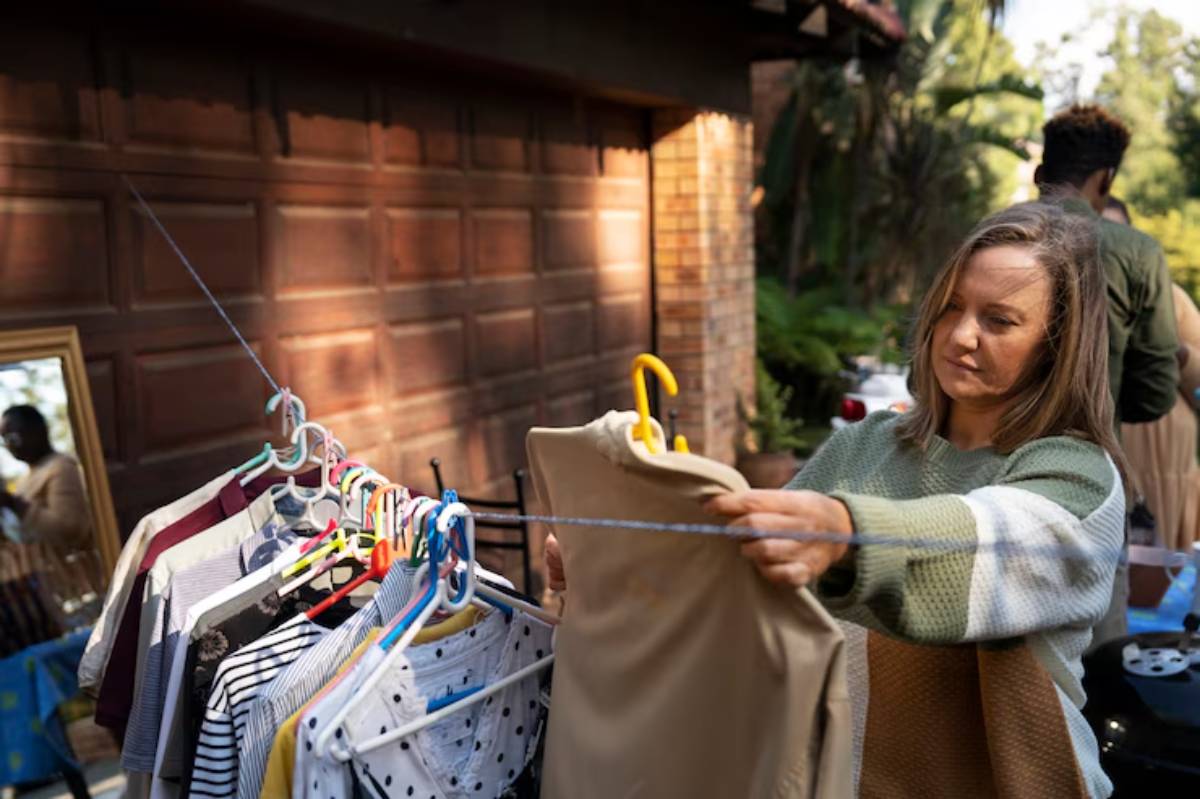
What to Avoid When Buying “Sustainable” Clothes
You’re on a mission to build a more ethical wardrobe. You’ve sworn off impulse buys, you’ve started reading clothing labels, and you’re actively seeking out “green” alternatives.
But as you scroll through websites or browse high street racks, it becomes clear:
sustainability in fashion has gone mainstream, and with that popularity comes confusion.
From garments labelled “eco” to collections dubbed “conscious,” brands are quick to use buzzwords that sound responsible. But many of these terms are vague, unregulated, or downright misleading. The result? You may be supporting fast fashion in disguise.
This guide will help you sidestep the traps of misleading fashion terms, avoid falling for greenwashing, and make truly informed decisions. Whether you’re a seasoned ethical shopper or just getting started, these eco shopping warnings and sustainable shopping tips will give you the clarity to shop confidently—and consciously.
Why Misleading Sustainability Claims Are So Common

Sustainability Sells—Even If It’s Superficial
According to a 2023 Deloitte survey, over 60% of UK consumers consider sustainability when making fashion purchases. Naturally, brands want to cater to that demand. But many do so with clever marketing rather than meaningful change.
Lack of Regulation
Unlike food or cosmetics, fashion labels are not tightly regulated. In many countries, terms like “sustainable,” “ethical,” or “eco-friendly” have no legal definition, allowing companies to self-declare without proof.
Consumer Fatigue
With so many buzzwords and claims flying around, it’s no wonder shoppers feel overwhelmed. And when you’re tired, you’re more likely to trust whatever sounds good, rather than digging deeper.
Misleading Fashion Terms to Watch Out For

Let’s break down some of the most common terms used in fashion marketing—and why they can be problematic.
1. “Sustainable”
Used broadly, this term often lacks specificity. A company may label an entire product line as sustainable simply because it includes recycled packaging or one eco-friendly fabric, while ignoring labour conditions or overproduction.
What to ask instead:
- Sustainable in what way?
- What materials were used, and how were they sourced?
- Were workers paid fairly and treated ethically?
2. “Conscious” or “Green”
These are soft, feel-good labels often used to signal environmental care without any detail. They may imply reduced impact, but they rarely provide transparency or third-party verification.
What to look for:
Detailed information on:
- Supply chain
- Emissions reductions
- Water usage
- Independent certifications
3. “Ethical”
“Ethical” may refer to animal welfare, worker treatment, or environmental standards—but which one? Brands often use it as a catch-all without defining their values.
Your move:
Find out if they publish factory information, audit results, or supplier relationships.
4. “Vegan”
It’s easy to assume “vegan” equals sustainable, but that’s not always the case. Faux leather made from PVC or PU might avoid animal harm, but it often relies on fossil fuels and non-biodegradable plastics.
Check:
- Is the material biodegradable or recyclable?
- What’s the full lifecycle impact?
5. “Eco” or “Natural”
Natural doesn’t always mean better. Cotton, for instance, is natural, but conventional cotton farming uses large amounts of water and pesticides.
Your strategy:
Look for qualifiers like “GOTS-certified organic cotton” or “closed-loop TENCEL™.”
Sustainable Shopping Tips to Help You Avoid Greenwashing

1. Look Beyond the Label
Brands love to slap “sustainable” on the front without backing it up on the back. Always read the product description, material list, and brand sustainability page. If they’re vague or full of fluff, be wary.
2. Prioritise Transparency Over Perfection
A truly sustainable brand will admit where it’s still working to improve
They’ll share:
- Factory locations
- Labour practices
- Carbon offset efforts
- Water use and waste reduction strategies
If a company makes big claims but shares little data, it’s a red flag.
3. Check for Verified Certifications
Legit certifications offer independent proof of sustainability.
Look out for:
- GOTS (organic textiles)
- Fair Trade (ethical labour)
- OEKO-TEX (non-toxic textiles)
- B Corp (social and environmental accountability)
- Cradle to Cradle (circular product design)
Not every ethical brand has these (especially smaller ones), but they’re helpful indicators.
4. Be Cautious with “Green” Collections from Fast Fashion Brands
A “Conscious Collection” means little if the company is still producing millions of garments a year and underpaying garment workers.
Ask yourself:
- What percentage of their total products are sustainable?
- Are they reducing production or just rebranding it?
This kind of surface-level change is often referred to as greenwashing.
To dig deeper into identifying these tactics, our guide on how to spot greenwashing in fashion brands outlines real-world examples and how to read between the marketing lines.
5. Use Tools to Evaluate Brands
Apps like Good On You rate brands based on transparency, labour rights, and environmental impact. Fashion Revolution’s Transparency Index also ranks brands based on supply chain openness.
If you’re exploring marketplaces that prioritise these ethics, our guide on best eco-friendly fashion marketplaces online introduces trustworthy platforms where you can shop with confidence.
Shopping Behaviour That Truly Supports Sustainability
Even with the best labels and intentions, your shopping habits play a huge role in fashion’s impact.
Here’s how to keep your values aligned with your cart:
1. Buy Less, Choose Better
Before clicking “add to basket,” ask:
- Will I wear this at least 30 times?
- Does it match my existing wardrobe?
- Is it a need or just a want?
2. Embrace Secondhand
Pre-loved fashion is one of the most sustainable choices you can make. From vintage gems to nearly-new staples, secondhand helps cut waste and reduce demand for new production.
Platforms like Vinted, Depop, and Thrift+ make it easy to find stylish secondhand pieces online.
3. Focus on Timeless Over Trendy
Trends come and go, but a well-cut blazer or a cosy wool jumper lasts years. Timeless pieces reduce the urge to constantly refresh your wardrobe—and make getting dressed easier, too.
4. Learn to Repair and Rewear
From sewing on a button to refreshing a faded black tee with dye, extending a garment’s life is deeply sustainable. It also creates a personal connection with your clothes.
How Brands Can Earn Your Trust
It’s not all doom and greenwashing. Many brands are working hard to do better, and they deserve our attention.
The ones worth supporting often:
- Publish impact reports
- Share details about suppliers and wages
- Collaborate with environmental and social organisations
- Encourage responsible consumption (e.g., care tips, take-back schemes)
- Maintain small, curated collections
Conclusion: What to Avoid When Buying “Sustainable” Clothes
Buying “sustainable” clothes isn’t always as straightforward as it should be. With so many brands jumping on the green bandwagon, it’s easy to be misled by clever wording and curated aesthetics.
But with a critical eye, a few key questions, and trusted resources, you can navigate the fashion space with confidence. The goal isn’t perfection—it’s progress. Every thoughtful purchase, every skipped impulse buy, and every question asked contributes to a system that values people, planet, and longevity over fast profits.
So next time you’re tempted by that “eco” label, pause. Dig deeper. Ask why, where, and how. Because real sustainability isn’t printed on a tag—it’s woven into the truth behind the seams.


